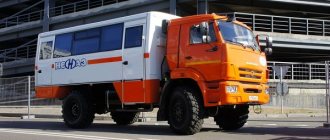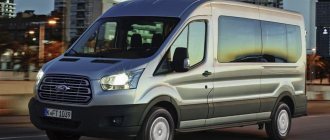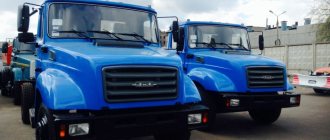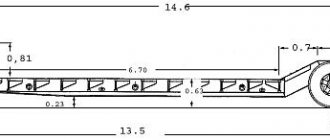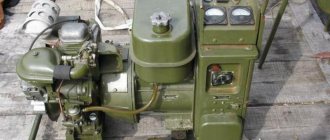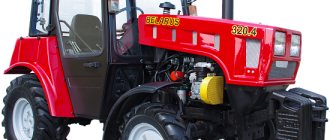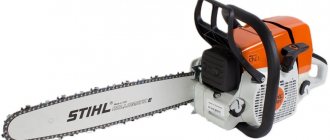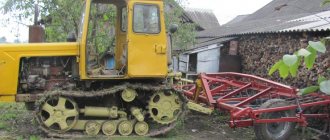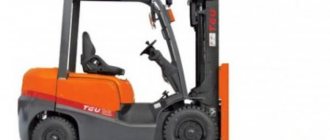Refrigerated trucks supplied under the VIS brand are designed for transporting small quantities of perishable products and medical supplies. The small size of the machine allows you to work in cramped conditions. The driver's workplace is located in the cabin, which is no different from cars.
Why did it happen so?
Perhaps the automatic requests do not belong to you, but to another user accessing the network from the same IP address as you. You need to enter the characters into the form once, after which we will remember you and be able to distinguish you from other users exiting from this IP. In this case, the page with the captcha will not bother you for quite a long time.
You may have add-ons installed in your browser that can make automatic search requests. In this case, we recommend that you disable them.
It is also possible that your computer is infected with a virus program that is using it to collect information. Maybe you should check your system for viruses.
If you have any problems or would like our support team, please use the feedback form.
A VIS 2347 or 2345 vehicle with a refrigerator is perfect for transporting perishable goods around the city. A special feature of these vehicles is the sufficient capacity of the isothermal body (about 3.5 m3) with a load capacity of about 650 kg.
Equipment
| Model | VIS 2349 | |
| Power windows for front doors | + | |
| Retractable seat belts (2 front) | + | |
| Driver seat belt indication | + | |
| Indication of time and ambient temperature | + | |
| central locking | + | |
| Driver's front airbag | + | |
| Tilt-adjustable steering column | + | |
| Electric power steering | + | |
| Cabin air filter | + | |
| Polypropylene bumper, unpainted | + | |
| Spare wheel winch | + | |
| Full size spare tire | + | |
Technical characteristics Equipment Vans
VIS - pickup trucks of this brand, light and maneuverable, have established themselves as indispensable vehicles for intracity transportation.
offers VIS cars in various configurations:
- open side,
- onboard with plastic superstructure,
- isothermal van (with rear or side hinged doors),
- isothermal with refrigeration unit,
- isothermal for transporting baked goods with guides for 36 trays.
Pickup trucks are equipped with larger side rearview mirrors. The rear wheels have mudguards. The engines are equipped with electronic fuel injection control and comply with EURO-4 standards.
Chassis Features
To produce a refrigerator, a passenger car is used, which is cut off behind the B-pillar. The resulting opening is welded with a steel sheet, which has additional stiffeners. A semi-frame welded structure is attached to the rear, on which the rear axle beam and shock absorbers are attached. Due to the increased load, leaf springs are used. On top of the side members and cross members there are attachment points for the superstructure.
When using the Lada Largus base, the roof panel is cut off, instead of which a plastic assembly with an increased height is installed. Amplifiers are installed inside to compensate for the decrease in body rigidity. The car is painted by the AvtoVAZ plant.
The use of refrigeration equipment involves the installation of an air conditioning compressor and modification of the on-board electrical system. The machines are equipped with additional wiring harnesses to supply power to the heat exchanger fan motors.
Lada Largus
To produce isothermal versions, a modification of the Lada Cube car, developed from Nizhny Novgorod, is used. The refrigeration unit is located under the fairing. The compartment for the driver and passenger is separated from the cargo box by a solid metal partition covered with a layer of heat-insulating material.
Loading and unloading is carried out through symmetrical hinged doors located at the rear of the body. The doors are suspended on hinges, providing an opening angle of 180°. Additionally, the body can be accessed through a side door, which is equipped with a standard travel limiter. There is a double rubber seal along the contour. Thermal insulating linings are installed on the panels of the opening elements.
The refrigerator built on the Lada Largus base has the following cargo compartment dimensions:
- length - 2200 mm;
- width (between wheel arch covers) - 1020 mm;
- width (along the side walls) - 1380 mm;
- height - 1260 mm;
- useful volume - 3.4 m³.
The refrigerated van is equipped with an in-line 4-cylinder gasoline engine producing 102 hp. Only a 5-speed manual transmission is offered. The vehicles are equipped with front-wheel drive. The brakes are equipped with a vacuum booster and an anti-lock braking system.
Lada Granta
Built on the basis of the Lada Granta sedan, the VIS 2349 small-sized truck is designed to transport products weighing up to 720 kg. However, this parameter includes the weight of the driver and the forwarder, so the machine is designed for a load of only 590 kg. The spare tire is carried under the car, so replacing a punctured tire in slush is an unpleasant experience. A niche located behind the backs of the driver and passenger seats is used to store the jack and tool kit.
The power unit is an 87-horsepower injection engine with a cylinder capacity of 1.6 liters. The car is equipped with a synchronized 5-speed gearbox. The maximum speed with a full load is 120 km/h. Average fuel consumption when driving in urban conditions is 9.5 liters per 100 km. A fuel tank holding 50 liters of gasoline is installed under the superstructure floor. The neck is located on the side panel of the cabin on the passenger side.
The isothermal booth is equipped with a power frame, which is sheathed on top with galvanized steel sheet. A layer of heat-insulating material 30-50 mm thick is laid inside. The body is equipped with rear hinged doors and an additional side flap on the right side. The doorways are equipped with seals made of frost-resistant rubber. The doors have standard brackets for installing seals.
Characteristics of the cargo superstructure:
- length - 1940 mm;
- width - 1650 mm;
- height - 1190 mm;
- internal volume - 3.2 m³.
To cool the cargo compartment, units from various suppliers are used. The compressor of the refrigeration unit is belt driven from the vehicle’s power plant; the power supply for the electronics is connected to the on-board network. The design of the installation has an electronic controller that automatically maintains the set air temperature. The refrigerator is capable of maintaining a minimum temperature in the booth of -20°C.
Chassis equipment:
| Suspension | |
| Front | independent, Macpherson type, spring, with anti-roll bar |
| Rear | dependent, leaf spring, with hydraulic telescopic shock absorbers |
| Wheels | |
| Tires | 185/75 R13С |
| Total information | |
| Fuel tank capacity (L) | 42 |
| Maximum speed (km/h) | 110 |
| Dimensions, mm | |
| Wheelbase | 2785 |
| Length | 4515 |
| Width | 1710 |
| Front track | 1400 |
| Rear track | 1380 |
| Height (cabin without load) | 1420 |
| Mounting length | 1900 |
| Fuel consumption, l/100 km | 9,8 |
| VIS 2347 | |
| Power windows for front doors | + |
| Retractable seat belts (2 front) | + |
| Indication of time and ambient temperature | + |
| Instrument cluster VAZ 2115 | + |
| central locking | + |
| Polypropylene bumper, unpainted | + |
| Spare wheel winch | + |
| Full size spare tire | + |
With which you can complete the specified car in our company:
- Refrigeration and heating equipment (Carrier, Elinzh(Sanden), Zanotti, ThermoKing)
- Autonomous cabin/body heater
- Cabin fairing/spoiler
- Fuel filter heater
- Tool box
- Crankcase protection
- Signaling
- Floor mats
- Strip refrigeration curtains (PVC)
*** The price of a vehicle in the basic configuration with a low isothermal FG without taking into account the cost of the chemical dispenser
Characteristics of VIS refrigerators
The VIS company began manufacturing small-sized trucks based on VAZ and IZH products in the late 90s. For production, vehicles with front or rear axle drive were used; there were modifications based on Niva SUVs.
An early model of a refrigerator is the VIS-2345, which uses a VAZ-2105/07 passenger car as a base. The vehicles were equipped with a 71 hp injection engine. and a standard 5-speed transmission. The truck could accelerate to a speed of 110 km/h, carrying a load weighing 750 kg (including driver and passenger). Fuel consumption in the city, according to manufacturer measurements, is 10.5 liters per 100 km. The refrigerator was equipped with a tank with a capacity of 39 liters.
Based on the VAZ-2113 chassis with front-wheel drive, VIS-2347 vehicles were produced. The cars were equipped with an 82-horsepower gasoline engine with a distributed fuel injection system. The cargo box did not differ from that used on the “classic” chassis. The improved chassis made it possible to reduce fuel consumption to 9.3 liters per 100 km. The fuel reserve is 43 liters.
To deliver cargo to remote areas, the VIS-2346 is used, using a Niva chassis with all-wheel drive as a base.
The SUV uses an 82-horsepower engine with fuel injection. The vehicles are equipped with a 5-speed gearbox, which allows the small-sized truck to accelerate to 110 km/h.
The increased weight of the car and a more complicated transmission led to increased fuel consumption. According to factory documentation, the average gasoline consumption is at least 11 liters per 100 km. At the same time, the fuel tank capacity is only 42 liters. The load capacity is 490 kg with the machine's own weight of 1335 kg.
Models of pickup trucks VIS 2347
| Model | Description |
| VIS 2347-0000010-30 | Flatbed pickup |
| VIS 2347-0000012-30 | Flatbed pickup with plastic superstructure |
| VIS 23472-0000010-30 | Isothermal van (wall thickness – 30 mm) |
| VIS 23472-0000010-30 | Isothermal van for transporting bakery products with guides for 40 or 48 trays (wall thickness – 30 mm) |
| VIS 23472-0000010-30 | Isothermal van (wall thickness – 40 mm) |
| VIS 23472-0000010-30 | Isothermal van (wall thickness – 50 mm) |
| VIS 23472-0000010-30 | Manufactured goods van (without interior lining) |
| Photos of VIS cars (click to enlarge): |
Technical characteristics of VIS 2349 Lada Granta
| Model | VIS 2349 | |
| Wheelbase | 2845 | |
| Gross weight (kg) | 1990 | |
| Load capacity (kg) | 720 | |
| Vehicle's own weight (unloaded) (kg) | 1040 | |
| Clearance | 165 | |
| Number of seats | 2 | |
| Wheel formula | 4×2 | |
| Engine | VAZ-11186 | |
| Number and arrangement of cylinders | 4, in-line | |
| Working volume (cm3) | 1596 | |
| Maximum power: kW (hp) | 64 (87) | |
| Maximum torque: Nm | 140 | |
| Environmental class | Euro 4 | |
| Fuel | gasoline, AI92 | |
| Drive unit | Front | |
| Clutch | Single disc, dry | |
| Gearbox: number of steps | Manual transmission 5+1 | |
| Suspension | ||
| Front | independent, Macpherson type, spring, with anti-roll bar | |
| Rear | dependent, leaf spring, with hydraulic telescopic shock absorbers | |
| Wheels | ||
| Tires | 175/65 R14 | |
| Total information | ||
| Fuel tank capacity (L) | 42 | |
| Maximum speed (km/h) | 110 | |
| Dimensions, mm | ||
| Wheelbase | 2845 | |
| Length | 4450 | |
| Width | 1700 | |
| Front track | 1430 | |
| Rear track | 1428 | |
| Height (cabin without load) | 1500 | |
| Mounting length | 1860 | |
| Fuel consumption, l/100 km | 9 | |

